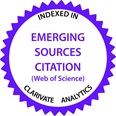Tytuł
Potrzeby zdrowotne społeczeństwa polskiego a skłonność do płacenia za świadczenia zdrowotne
Keywords
spatial diversity, health care, willingness to pay, health needs
Słowa kluczowe
zróżnicowanie przestrzenne,opieka zdrowotna,skłonność do płacenia,potrzeby zdrowotne
Abstract
Health needs of every person are growing constantly. Attempts to improve social well-being in relation to health needs use the results of cross-sectional studies combined with local data at the individual level. Popularisation of GIS tools has enabled monitoring of various system dysfunctions and thus contributes to the identification of actual health needs, thereby improving the quality of healthcare via, for example, adjusting health policies and changing the goals of public health. GIS can be used for mapping health needs that have been specified by the Ministry of Health. However, as evidenced by research and observed in numerous opinions, it is possible to extend these analyses in terms of regional/local factors, taking into account households’ preferences. The analyses within the research aim were conducted mostly for the level of Polish subregions. The data was collected on the basis of reports from the Local Data Bank of the Central Statistical Office and the Council for Social Monitoring – Social Diagnosis. Spatial statistics and econometric tools were applied, focusing the research attention on patterns of spatial distribution of variables; for that purpose, spatial autocorrelation measures and cluster analysis were adopted.
Abstrakt
Potrzeby zdrowotne człowieka stale się zwiększają. Próby poprawy zadowolenia w sferze zapotrzebowania zdrowotnego są podejmowane z wykorzystaniem rezultatów badań ilościowych identyfikowanych lokalnie. GIS umożliwił monitorowanie niedoskonałości systemu, pozwalając na identyfikację rzeczywistych potrzeb zdrowotnych. Przekłada się to na poprawę jakości usług, np. dzięki dopasowaniu polityk zdrowotnych i ukierunkowaniu zmian celów dla zdrowia publicznego. GIS zostaje zatem wykorzystany przy mapowaniu potrzeb zdrowotnych, z rozszerzeniem analiz uwzględniających uwarunkowania regionalne oraz preferencje gospodarstw domowych. Analizy prezentowane w artykule były prowadzone dla polskich podregionów. W opracowaniu wykorzystano dane GUS oraz Rady Monitoringu Społecznego – Diagnoza Społeczna. Sięgnięto po narzędzia statystyki i ekonometrii przestrzennej. W celu badania rozkładów przestrzennych zmiennych wykorzystano m.in. mierniki autokorelacji przestrzennej oraz analizę skupień.
Recommended Citation
Jewczak, M., & Twardowska, K. (2017). Health Needs of the Polish Society and the Willingness to Pay for Health Services. Problemy Zarządzania, 15(69), 159-174. https://doi.org/10.7172/1644-9584.69.11
First Page
159
Last Page
174
Page Count
15
DOI
10.7172/1644-9584.69.11
Publisher
University of Warsaw







